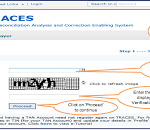1 How can I file TDS?
Guide for Uploading TDS Returns on the Income Tax Portal
You must hold a valid TAN and it should be registered for e-filing.
Your TDS statements should be prepared using Return Preparation Utility (RPU) and validated using File Validation Utility (FVU)
You can prepare your returns in an easy manner using ClearTDS.
2 What are the documents required for TDS return?
General Documents for Filing e TDS return
PAN card/Pan Number.
Tax payment challans (Self-assessment, advance tax, if you have deposited the same)
TDS certificates (if TDS has been deducted by other)
All Bank account information.
3 Following is the procedure that a deductor needs to follow:
Login TIN NSDL Portal. To pay TDS online visit the website of income tax department. …
Select the Relevant Challan. …
Fill in the Challan Details. …
Confirm Challan Details. …
Make TDS Payment. …
Online Verification.
4 Who can file TDS return?
TDS return can be filed by employers or organizations who avail a valid Tax Collection and Deduction Account Number (TAN). Any person making specified payments mentioned under the I-T Act are required to deduct tax at source and needs to deposit within the stipulated time for the following payments : Payment of Salary
5 How long does it take to process TDS return?
20 days
After filing such returns it takes 15–20 days to process the same. Once processing has been completed, your TDS amount starts reflecting in your 26AS. Therefore normally check after 10–20 days after above mentioned due dates. However note that your credit is subject to filing of TDS return by your deductor.
6 How is TDS calculated on salary?
For example, if you are under 60 and your total taxable income is Rs. 5 lakh, you must pay 5% of Rs 2.5 lakh as tax (income up to Rs 2.5 lakh is not taxable). Please note, TDS is deducted every month by your employer. So, your expected tax liability over the year is divided by 12 and collected every month.
7 Why TDS has been deducted?
TDS stands for ‘Tax Deducted at Source’. It was introduced to collect tax at the source from where an individual’s income is generated. The government uses TDS as a tool to collect tax in order to minimise tax evasion by taxing the income (partially or wholly) at the time it is generated rather than at a later date
9 What is the rule for TDS deduction?
TDS is deducted only if your total income is taxable. However, TDS will not be deducted in case your total income is Rs. 2,50,000 and this amount is applicable for men and women below the age of 60 years. Note: TDS deduction rate on salary ranges from 5% to 30% which is equivalent to the applicable income tax slabs.
8 What is difference between income tax and TDS?
Income tax: It is paid on the annual income where taxes are computed for a particular financial year. TDS: It is deducted at source on a periodic basis in the particular year. Income Tax: The taxpayer determines his liability and makes the payment directly to the government.
